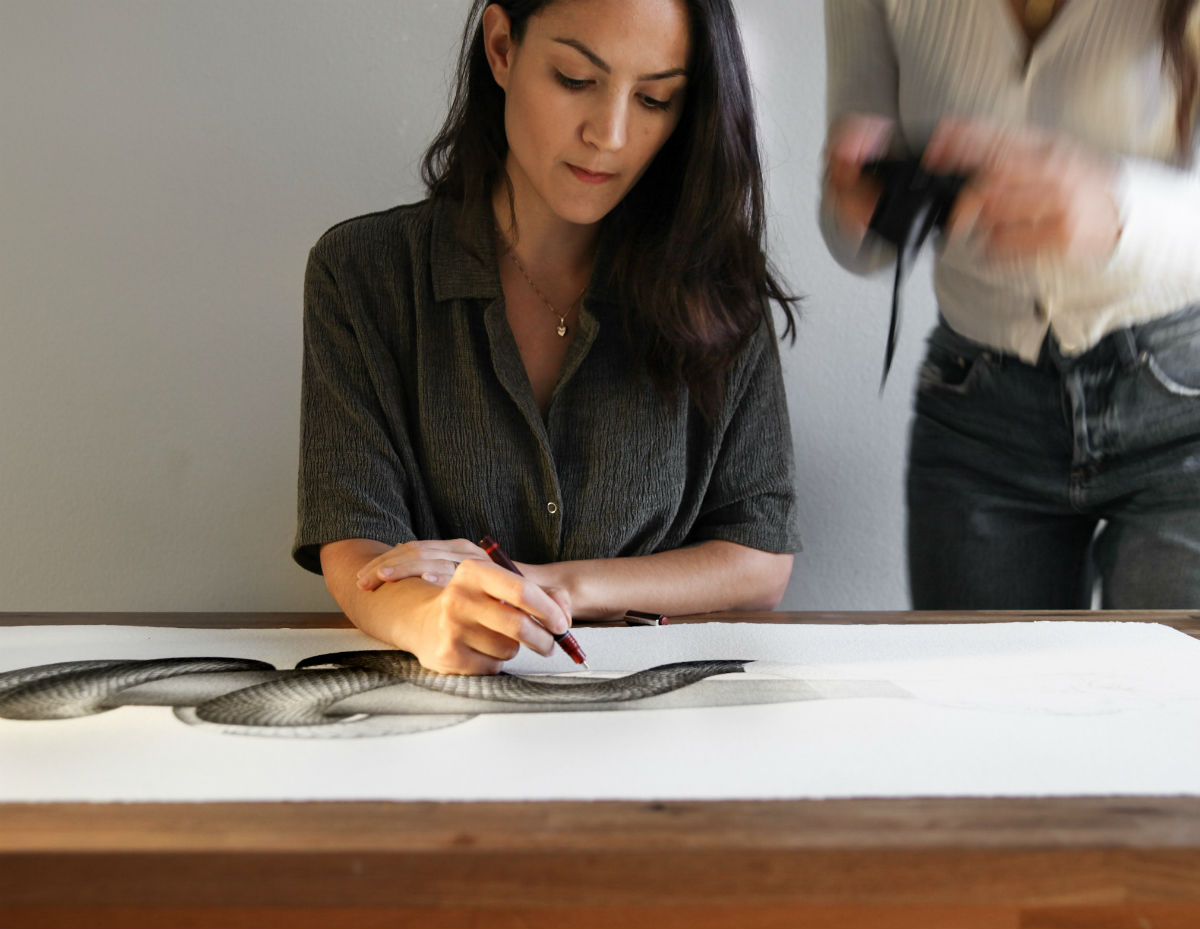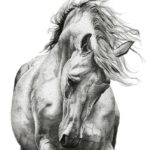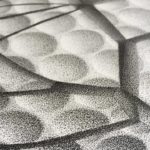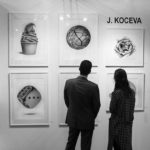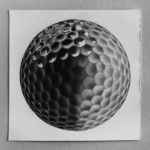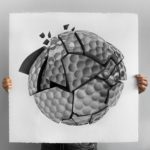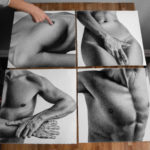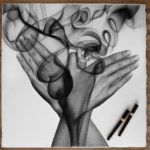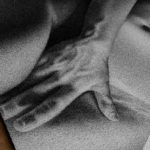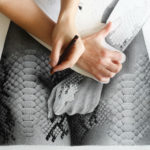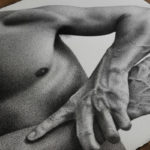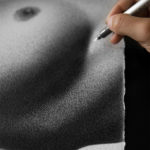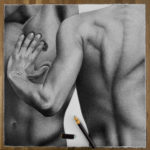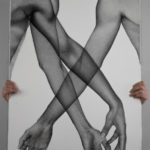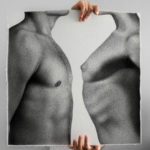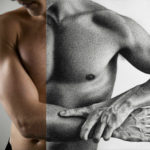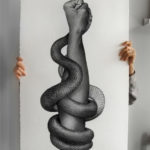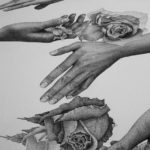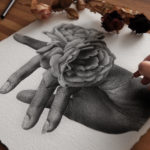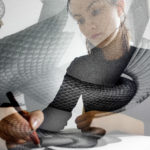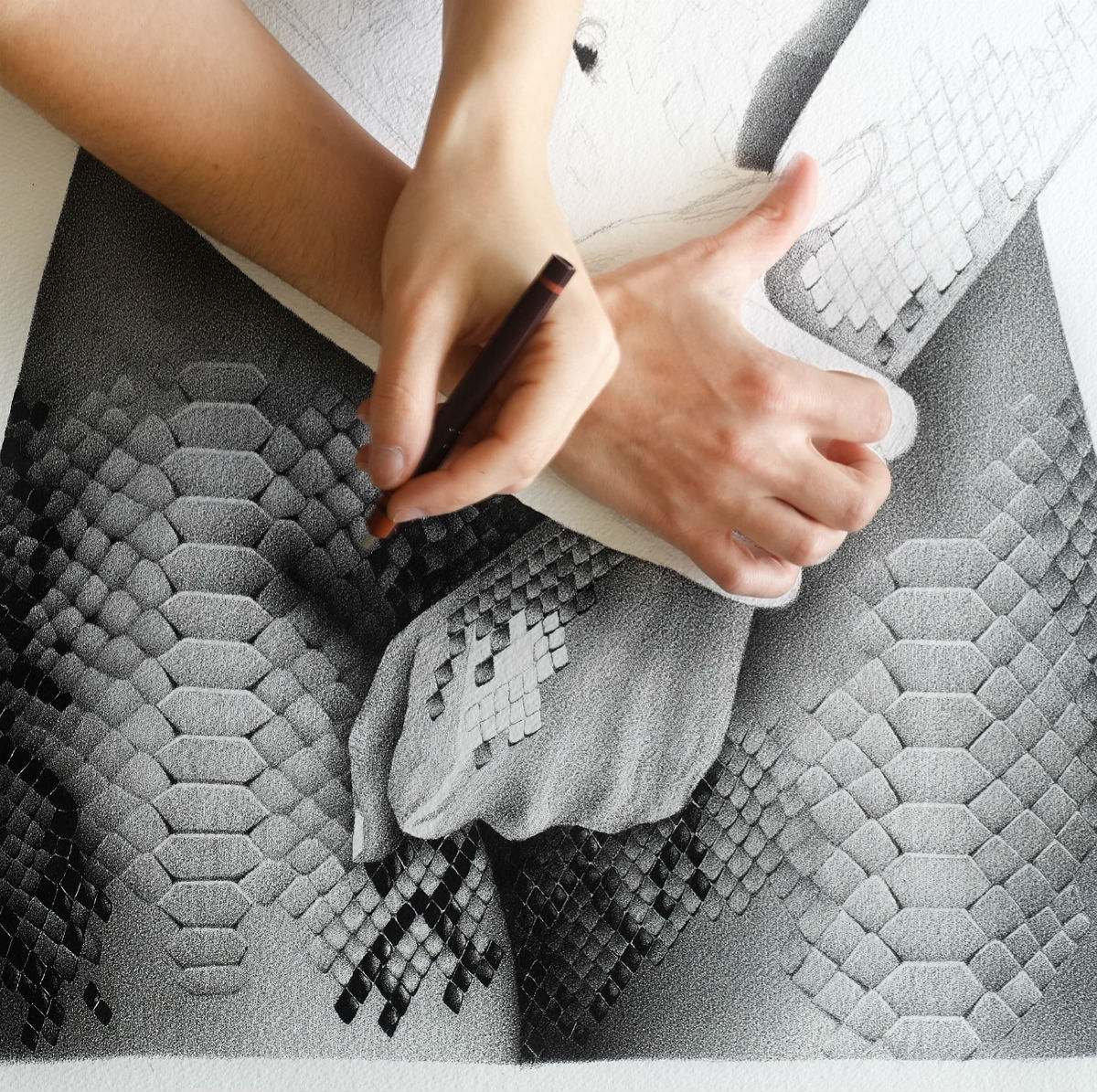
Julia Koceva’s work begins where silence does: in the space between breath and stillness, between light and shadow. A stippling artist of Bulgarian descent living in Sweden, she composes her drawings dot by dot—each mark a quiet act of devotion, each piece a meditation on presence. Working with the obsessive patience of a watchmaker and the eye of a photographer, Koceva uses pointillism not as historical homage but as a contemporary language—one capable of holding vulnerability, control, intimacy, and inquiry all at once.
Her practice emerged unexpectedly—out of emotional exhaustion, out of a job in criminology, out of a longing for expression not found in language. In her hands, the body becomes both subject and vessel, anatomical and poetic. Inspired by Mapplethorpe, Newton, and the classical grace of Greek sculpture, Koceva maps the contours of human skin as if they were landscapes—carefully lit, deeply felt, and rigorously constructed.
In an age of speed and spectacle, her work resists. It slows the eye, commands close attention, and draws the viewer inward. In this conversation, Koceva reflects on her path from bureaucratic structure to creative freedom, on the loneliness of art-making, on failure and persistence, and on the stubborn joy of placing one dot after another until something sacred begins to take shape.
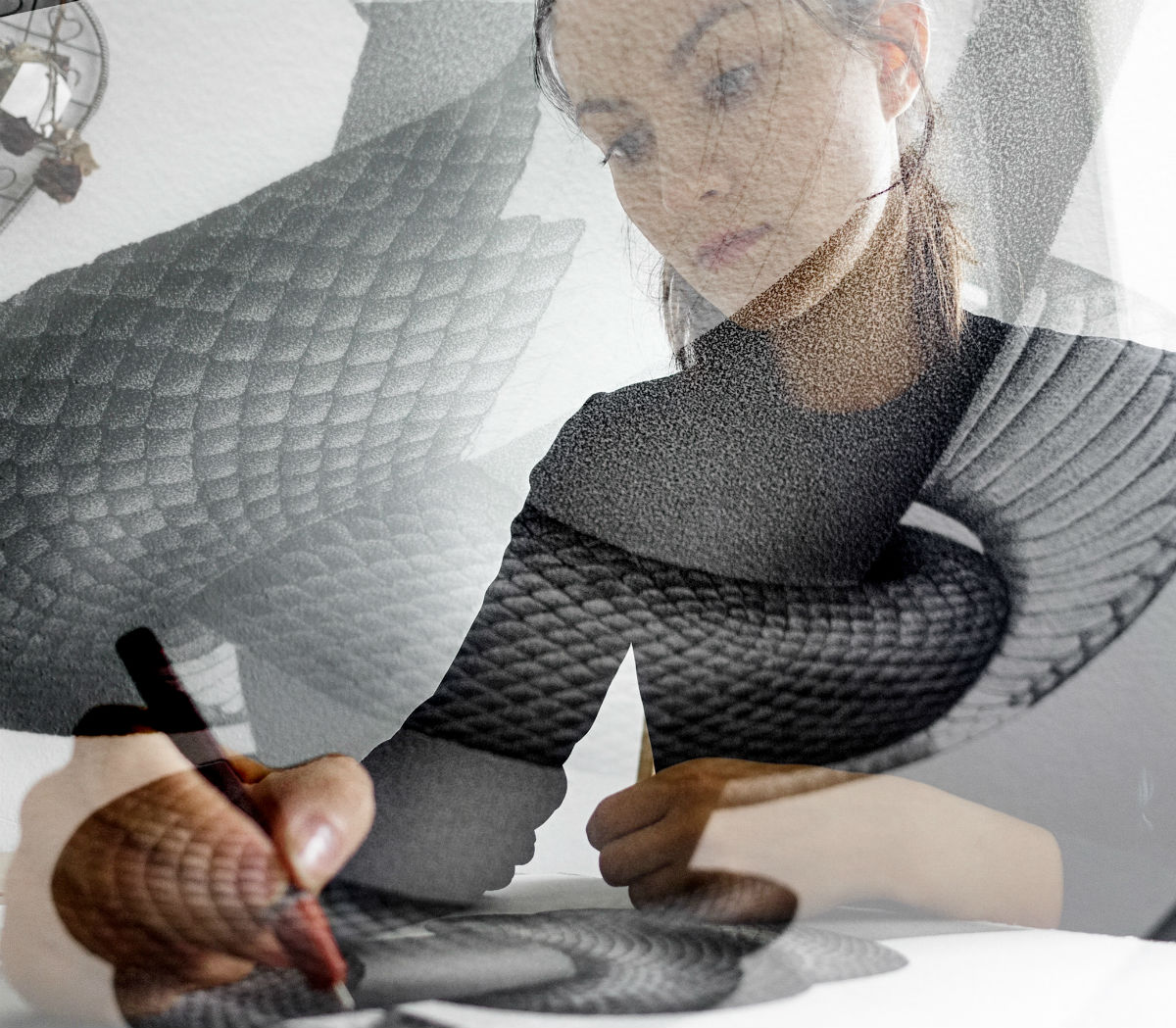
Interview
Artist: Julia Koceva
By Carol Real
What is your strongest childhood memory? What is your earliest memory of wanting to be an artist?
My strongest childhood memory is one of my grandmother and mother in the kitchen of our house on the top of a mountain in Bulgaria. I would spend all my childhood summers here. I would wake up by the smell of coffee and the sound of bells from the goats on their passage for fresh grass. My mother and grandmother would chit chat about maintenance of the house and wonder how I could possibly spend an entire summer away from the city without any friends. Little did they know then, I was happiest there. Safely tucked in bed listening to what would become my biggest role models in life.
My earliest memory of when I realized I wanted to spend my life making art was merely 3 years ago. My biggest passion since I can remember was photography, but that was mostly just for me to enjoy. The joy of creating has always been there, whether it would be taking a photograph, making a scrapbook, or sewing a pillowcase. But during a very tough year at the job I held 3 years back, I began drawing. I had never enjoyed anything as much in my life. The dream began to grow.
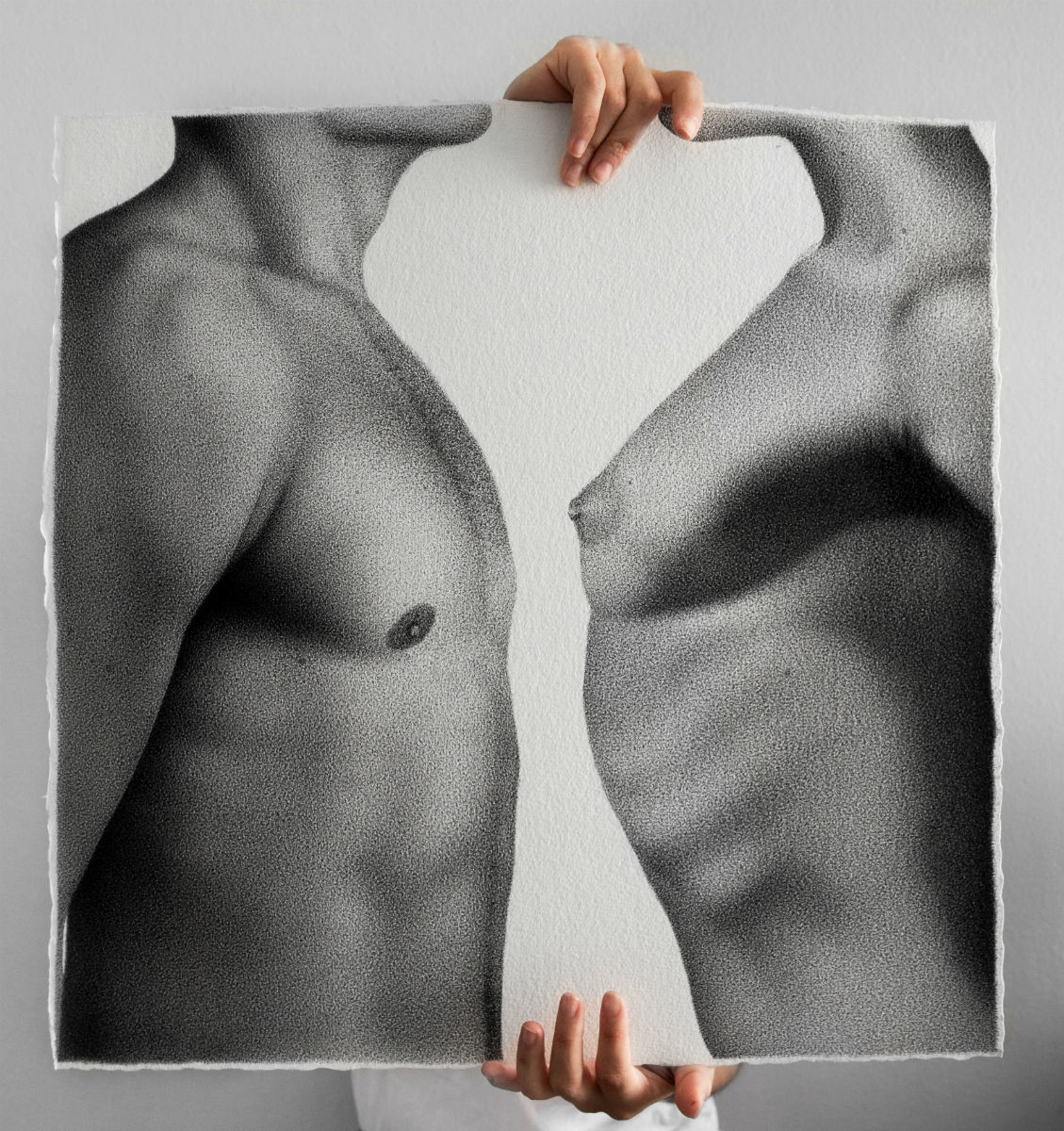
What is your background and how did you get started in the art world?
I finished my bachelor’s degree at Lund University in 2015 and shortly after that I took a job with the Swedish Migrations Office. I started out by creating an account on Instagram which I would use only for posting drawings. A year in, I reached out to a local gallery, Jäger & Jansson Gallery, who gave me the opportunity to, for the first time, show my art in public.
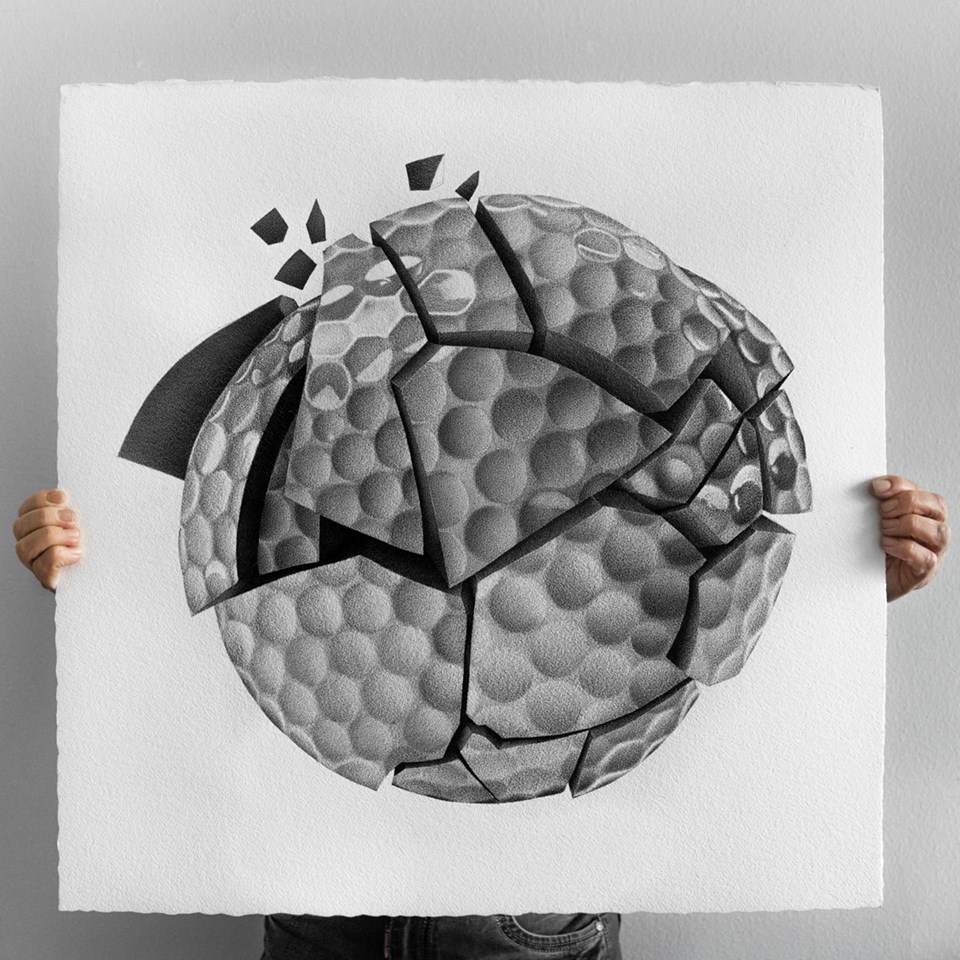
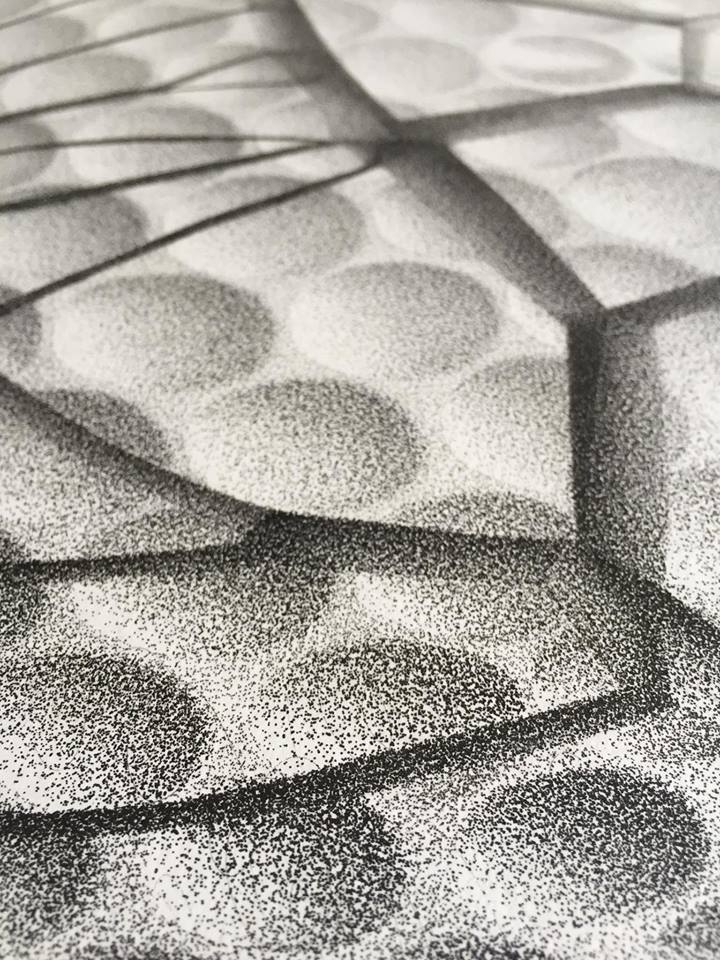
Who has been your biggest influence in your art career and in general?
I feel it’s crucial to mention my family, both in art and in general. Their support and encouragement were a stepping stone for me to even entertain the idea of quitting my job to pursue art. I was also taught, by example from my family, that if you want something in life you need to work for it with determination and sometimes with sacrifice. For most of my work ethic, I have them to thank.
I started exploring nude photography when I discovered the works of Robert Mapplethorpe, Irving Penn, and Helmut Newton. I was also very fascinated by ancient Greek sculpture. I found it intriguing how one body can be both pure and simple, but also erotic and provocative. Later in life I came across Olivier Valsecchi, who, so brilliantly, merges the sculptured human form with historical still life paintings into pale, but eerie photographs. At this point I really began honing my eye and learning how to use natural light to create photographs that would make your eye trace the shape of the body, guided by the pattern made from lights and shadows. I use photographs today to create my drawings.
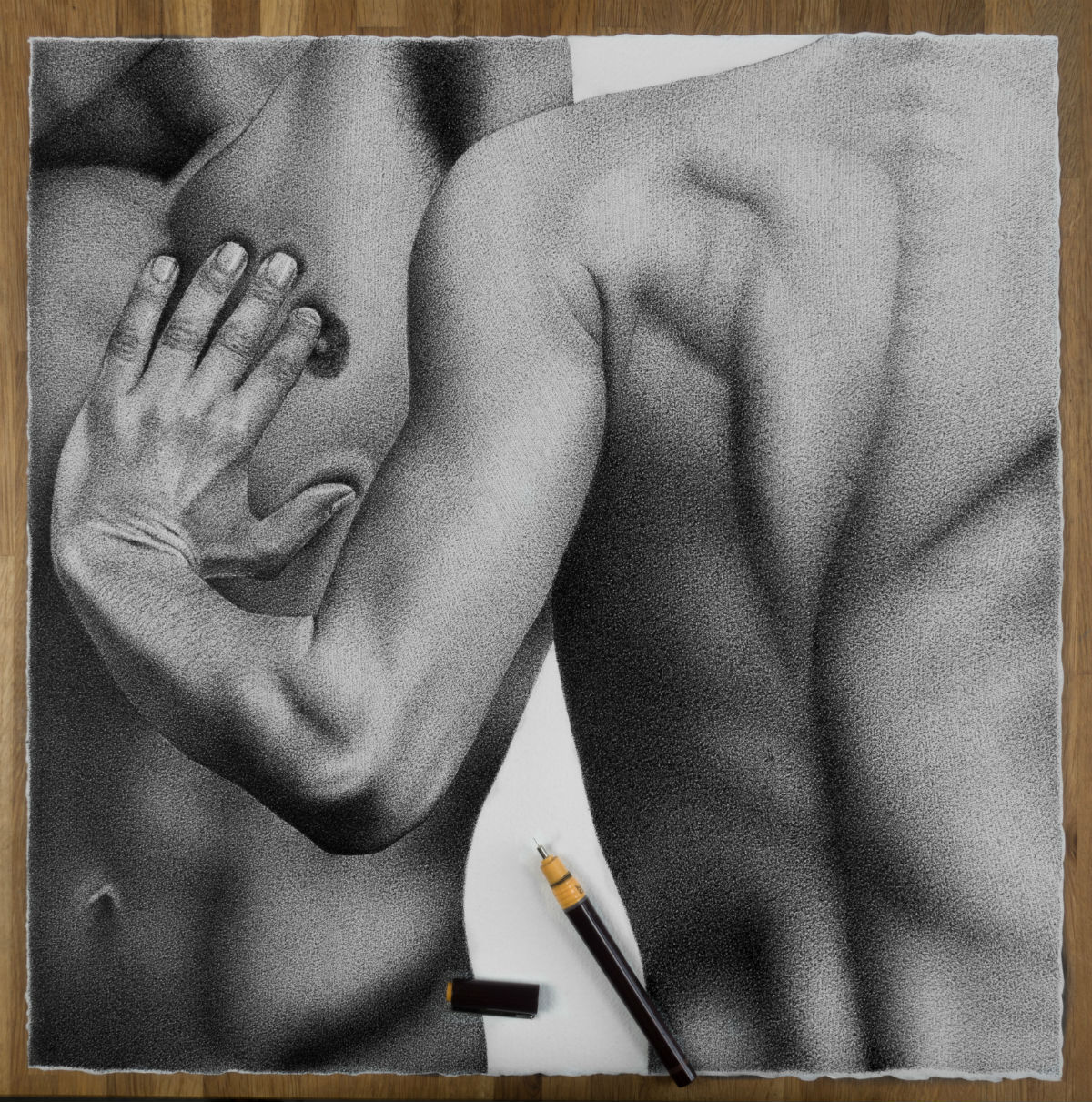
How and when did you adopt your style and the medium pointillism? How would you describe your style of work?
I dabbled in all sorts of mediums and techniques before completely adopting pointillism. I found everything just a bit too messy and I realized I had no skill and no space for painting in oils. I came across tattoo artists who would use dots for shadows in their designs and it fit me perfectly. I could make large photo realistic imagery in a very methodical and meticulous way.
I am very much guided by my photographic eye, so I tend to rely a lot on my photography before creating a piece. Lighting and composition are key elements in my work.
I would describe my style and body of work as very pedantic, yet emotive due to the presence of the human body and how it reflects shapes and volume like nothing else. The subjects I depict tend to be classical and rational in shape and form, but what I hope, with an element of surprise and intrigue.
Describe your creative process. How long does it take a piece to go from idea to art? What do you believe is the key element in creating a good drawing?
My process and forming of a piece is quite organized. I start out with, usually, merging several different ideas into one. Sometimes that takes some experimenting in Photoshop to try an idea out. Then I cut my paper to the size to fit the composition of the drawing I have in mind. The outline, in pencil, usually takes me 2 days to complete depending on its complexity. I will sometimes use grid – method with my largest pieces to help with the outline. Then I put pen to paper.
In my case, the key has been trusting the process. I never rush a piece or compromise on quality. This was a learning process I had to endure and then fully adopt to make a good piece. I like order in all aspects of my life, which has made me sensitive when making mistakes. But mistakes are key too. It doesn’t necessarily allow for a better idea to flourish, but simply learning to permit mistakes and then have the mindset to start again has been instrumental for me.
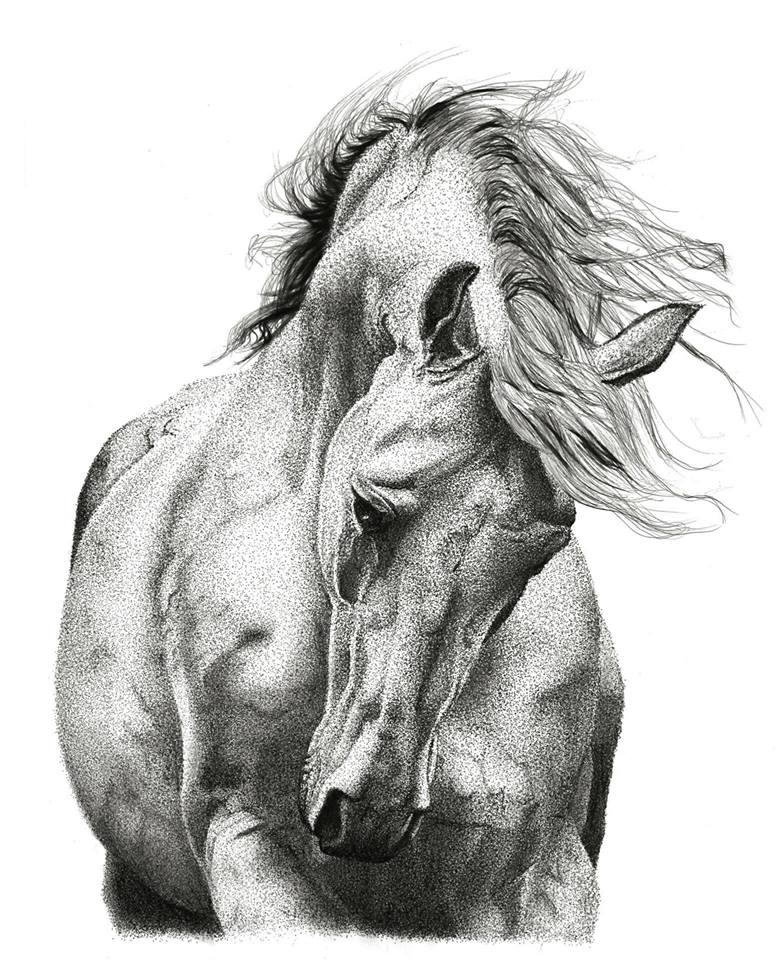
What is a typical day for you?
I get to work while enjoying my first cup of coffee. I usually work between 12-15 hours per day. I take breaks with walks, go running or spend time with friends or family. But mostly I just place dots on paper and listen to podcasts and audio books.
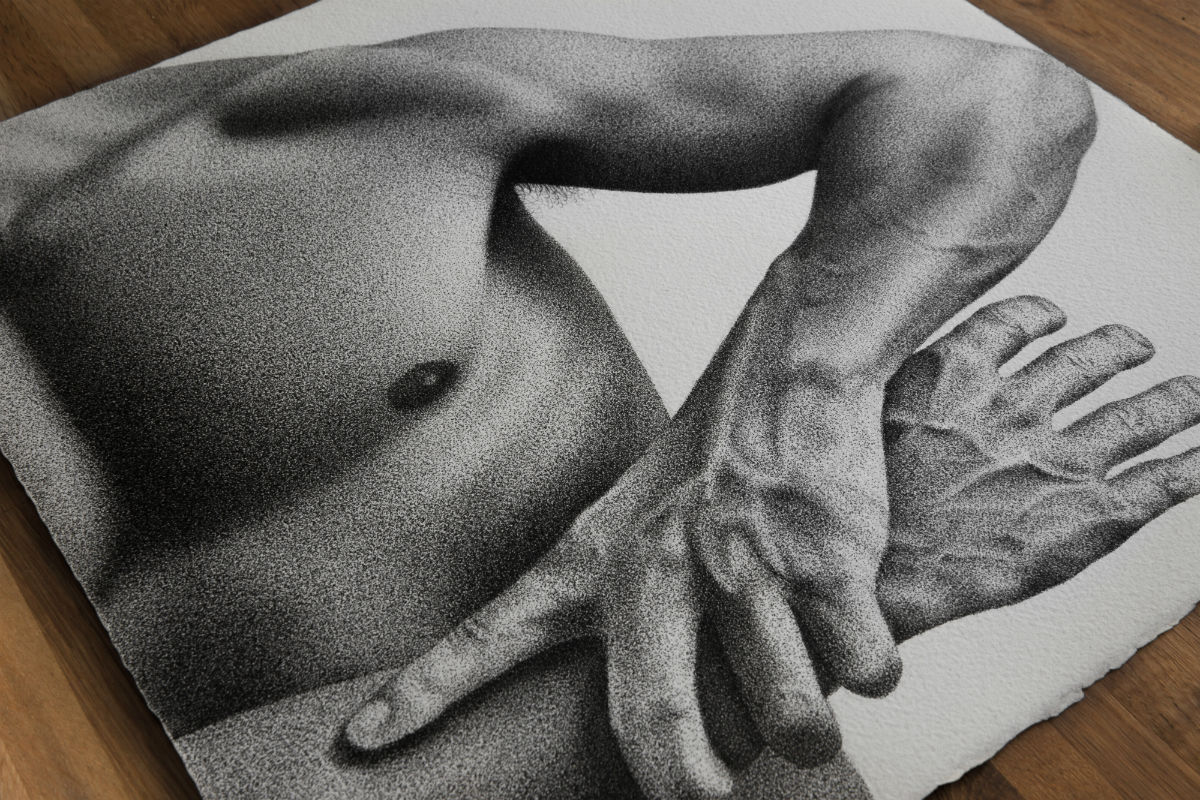
Which piece or collection to date has given you the most satisfaction?
One of my most satisfying works was one of my earlier figurative works. One of a female lower torso and hip with a hand covering her pubic area. This was a piece where I explored drawing in and out of focus. Precision is a near key element in what I do, but sometimes it can be more gratifying drawing ‘outside’ the lines.
What do you dislike about the art world? What is the hardest thing about being an artist?
I consider the art world to be very elitist at times. A place where I still don’t feel I belong or privy to. I don’t come from an artistic background and I felt at times that the only way ‘in’ would be to already, somehow, be an established artist. I think that many who appreciate art in general feel out of place in museums and in galleries if they aren’t educated about art. I think art is something to be experienced for everybody and art should enable conversations and education for established artists as well as for its admirers. On the other hand, I trust the process of making good work and focusing on that. Then good things will come.
I learned quickly that becoming an artist, working the hours I do, would take a lot of sacrifice. I still struggle with it. But mostly I struggle with not feeling like I belong. Neither in the art world, nor outside it. Art is personal and therefore sometimes lonely. My work permeates my personal life and vice versa. At times it’s challenging to tap into the deepest facets of oneself and in turn display that to the public. Then you get to share your art and you see a small community building around you with those who connect to what you have created.
What are you doing when you’re not creating? What hobbies do you have? What interests do you have that might surprise people?
These days I rarely spend any time not creating. Photography is my biggest hobby and I draw most of my inspiration from it. But I would most likely spend all my free time outdoors if I could. I am drawn to the country sides or vast fields or mountains. It makes me feel small, and any difficulties feel smaller as well. For the most part I prioritize time with my friends and family.
If I may say, I’m a pretty decent cook, so I love to have dinner parties! Being a host is somewhat of a hobby of mine. I love puzzles and trivia games. I am however still very keen on keeping up with the topics that got me into pursuing a degree in criminology. I’m an avid news reader and I read/listen to a lot of publications regarding crime and justice, mental health, politics, our environment, health, and medicine.
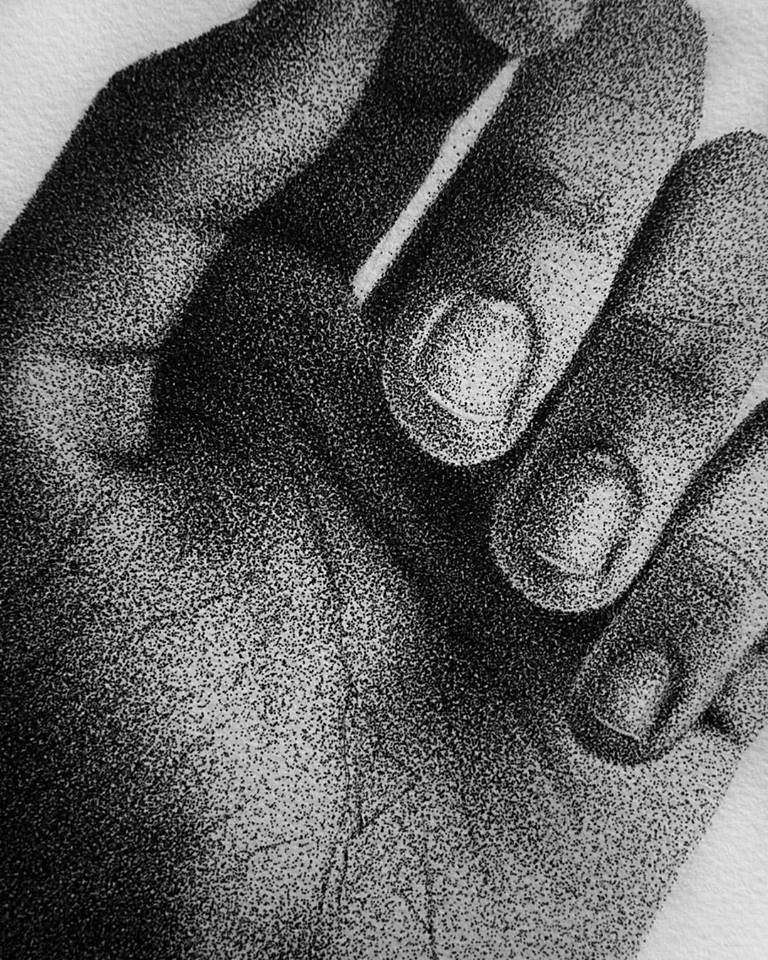
Can you describe an experience that may have been significant to you and your art?
This would be a terrible experience of mine. Two years ago, my career in drawing began to pick up a bit. I was going to New York to attend Art Expo. I didn’t have any experience with art fairs or showing my work to an international audience in such a large setting. But my hopes were high. I thought I’d at least have a ton of meaningful encounters and at best have somebody like my work. But none of this really came about. My art was hanging on the backside of a wall, visible to almost no one. And those who passed barely turned an eye. At my lowest I wanted to leave the fair and quit this new terrifying and challenging line of work. But with the encouragement of my team there, we found a table for me, where I could sit and draw. And draw people in. And I did. It started more than a few conversations. I did not end up selling any pieces, but my spirit was lifted. At first if you don’t succeed…
Can you tell us a little bit about your new projects or plans? What will you be doing artistically in 10+ years?
My next step will be a solo show in London in autumn of 2019. I am making texture the key for the pieces I will present. I want the viewer to feel compelled to touch and feel the piece even though it’s but a 2D drawing on paper.
Creatively, in 10+ years, I will likely be in a very different state personally and I imagine my personal life influencing my work more profoundly than it does now, in my mid-20s. I am keen to see where, in turn, that will lead my work. I hope to create a body of work that withstands the test of time and is appreciated across cultures. Most of all, I hope that creating will be as gratifying in 10+ years as it is today.
